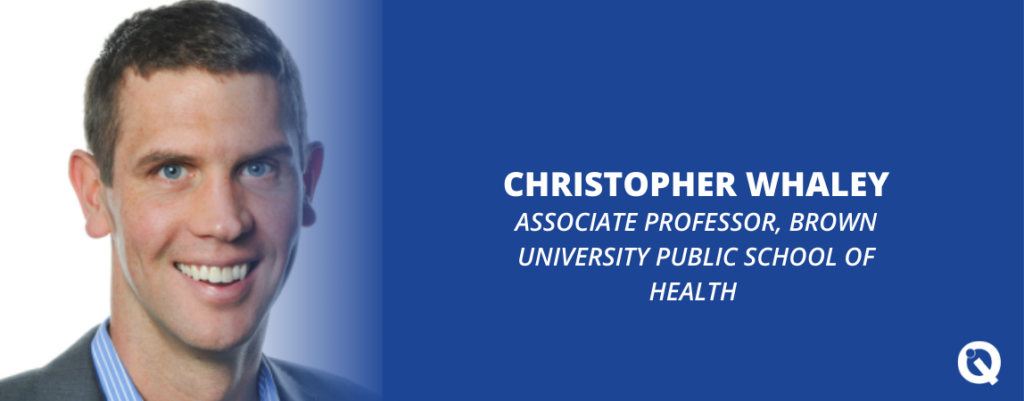Christopher Whaley, Ph.D., Associate Director of the Center for Advancing Health Policy through Research, Associate Professor of Health Services, Policy and Practice at Brown University. Professor Whaley is one of the keynote speakers at the Quality Institute’s May 14 Spring Conference on Key Health Care Issues for NJ Voters at the Ballot Box.
Your research as a health economist focuses on health care price transparency and market structure, including your work at the RAND corporation, where you focused on hospital price transparency. Why should states and other larger employers or purchasers participate in transparency projects like the Hospital Price Transparency Study?
It’s important to participate and learn about prices, including through the efforts that I’ve led through the Employer Price Transparency Project. How we finance health care in the United States through employer-sponsored health insurance is essentially taking money from worker wages and using that to pay for health care benefits. As the agent guiding those purchases, employers have both a legal fiduciary and, I think, a moral obligation to make sure that those purchases are being done wisely and in the interest of their employee populations. Without accurate information on prices, I don’t think employers can fulfill that fiduciary obligation.
How are employers and policy makers using the findings of the hospital price transparency studies right now?
We’ve seen two great uses of the data. One is employers having insight into prices that are negotiated on their behalf — it’s no longer just this black box called health care. They have some control over purchasing decisions. Employers have been able to use this data to make sure that purchases are being done efficiently and at prices that they consider fair.
States, meanwhile, have used the data to understand pricing dynamics in their state and to understand some of the market-level features that impact prices. In markets where there’s say a lack of competition, states have used this type of data to push for policies that increase competition in health care markets in their state.
How does your Employer Price Transparency study results align with voter concerns about health care costs? Are there lessons there for candidates or political parties?
Health care cost and affordability are the most challenging issues in the health care system. What we illustrate in our work is that there’s a tremendous amount of variation in health care prices. Employers are typically paying prices that are quite high relative to what other purchasers pay. Politically, I think that has led to substantial individual and patient-level frustration. I think from a political perspective it’s challenging as well because policies that seek to improve affordability in the health care system do so frankly at the expense of revenue to providers in local communities. Policymakers must politically balance those two competing forces.
What can our readers look forward to hearing about more in your keynote about voter attitudes on health care affordability?
In many cases a lack of affordability drives patients and voter frustration with the U.S. health care system. What I will try to highlight is how high prices contribute to those frustrations and those frictions with the health care system that I think filter down to how voters feel about the health care system.
We’re in a somewhat unique place when we think about the politics of health care. For the last decade or 15 years, health care politics have really been about how do we expand coverage and provide additional sources of coverage — whether it’s through the ACA expansions or in many states expanding access to Medicaid.
What I think we’re seeing is a recalculation among those who have access to insurance but are realizing that in many cases it’s insurance that is still quite expensive. Whether you’re paying a thousand of dollars a month for a premium or have a deductible that’s over $10,000 per year, like many family deductibles are, the politics and the calculus of how people view access to care is not just having insurance, but having insurance that is affordable.
Finally, we like to ask a question beyond a person’s professional work. If you could choose anyone (throughout history or alive today), who would be your hero?
In my work I learned about a real hero, a woman named Marilyn Bartlett, who is an accountant who ended up working on health care issues and following the numbers. When she took the helm of the Montana Employee Benefit Plan, she led efforts to move the plan from projected reserves of minus $9 million to positive $112 million in less than three years. For her accomplishments, she was selected as #13 of Fortune Magazine’s World’s 50 Greatest Leaders of 2019. I think without that very detailed eye for accounting, you don’t have the appreciation for how complicated the health care system is and how many actors are benefiting from that complexity. I think there’s a saying, “Where there’s a mystery, there’s a margin.”

